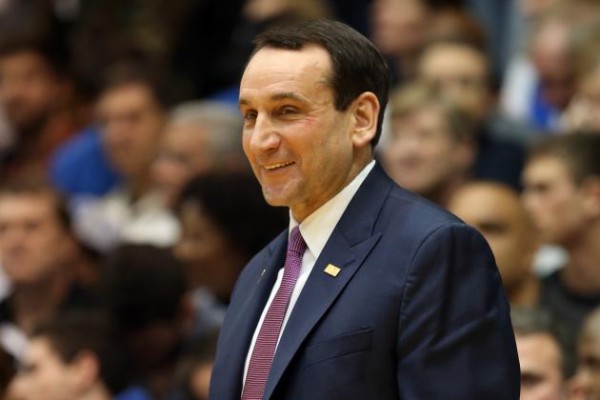Digging Deeper Into ESPN’s Future Power Rankings
Posted by Bennet Hayes (@hoopstraveler) on September 16th, 2014The 2014-15 college basketball season may be creeping ever closer, but the folks over at ESPN are already thinking well beyond Indianapolis and the 2015 Final Four. Last week, ESPN’s group of college basketball insiders released their take on what Top 25 polls could look like over the next three seasons in a column entitled “Future Power Rankings.” The panel evaluated and rated programs on a 1-10 scale in five different categories — Coaching, Current Talent, Recruiting, Program Power, and Stability — then pooled the results to extract a singular score (out of 100) for each program. Coaching, Current Talent and Recruiting each counted for 25% of that final tally, while Program Power made up another 15%. Stability counted for just 10%.
Rankings and lists may seem particularly interesting on the slog through these college basketball-less months, but the exercise in responding is the same now as it will be in January, February and March: We will always have our gripes. Highlighted below are a few of the more controversial decisions — some method-based, others result-oriented — that ESPN’s committee of experts produced.

Coach K Should Have Plenty Of Reason To Keep Smiling, As His Program Graded Out On Top In ESPN’s Future Power Rankings
- Redundancy Within Formula: In many ways, this list would have wound up more accurate, honest and interesting if the esteemed panel hadn’t been forced to break down each program into five components. The gimmicky, algorithmic path that they followed may offer more individual points of discussion (Is John Thompson III really that bad a coach? Is the power of Xavier’s program ACTUALLY significantly stronger than Villanova?) , but there’s significant overlap across many of the categories. The delineation between coaching and recruiting is often a difficult one — as Mike Francesa and John Calipari recently discussed — and stability also strongly correlates with a successful, entrenched head coach. In fact, save for Kentucky, every team in the top 10 of the rankings had a stability score that measured within four points of their coaching score (UK received a 98 for coaching and an 88 for stability). Looking elsewhere, recruiting and program power are another pair of categories with predictable overlap, as growth in either category inevitably fuels the other.
- In Real Life, Certain Categories Carry More Weight For Different Programs: In ESPN’s model, each of the five categories carries the same amount of weight for every program. Recruiting amounts for 25 percent of Kentucky’s future power ranking score, just as it does for Harvard. Forgotten by the model is the fact that current high school juniors and seniors who eventually become Wildcats will have far more say in Kentucky’s future than will current high school upperclassmen who wind up donning the crimson and white of Harvard. This discrepancy won’t be true in every high-major vs. mid-major comparison, but generally speaking, high-major programs — especially the elite ones — will be bringing in one-and-done type talents that necessitate good recruiting and quick rebuilds, while the lower levels of D-I rely more on current talent and players who will be sticking around for four years.
- Notable Omissions: Commentator Seth Greenberg noted Wichita State and Iowa State as surprising snubs, and you’ll find no disagreement here. Each program has found ways to win with drastically different roster compositions over the past half-decade, and Gregg Marshall and Fred Hoiberg have each earned the full respect of their peers. Other programs you could have expected to see on this list but didn’t? How about Oregon, Texas, and Indiana. The Ducks and Longhorns both return plenty of talent from a year ago, and each will be adding an impact freshman this winter (lead guard JaQuan Lyle for Oregon and center Myles Turner for Texas). Neither program has been especially dominant in the last five years, but Dana Altman and Rick Barnes are proven recruiters with excessive resources at their disposal, so there’s no reason not to expect both program to linger around the Top 25 for much of the next three years. Things are slightly different in Bloomington, where a lack of respect for Tom Crean may have cost the Hoosiers a spot in these rankings. Last season was a more significant step back than IU fans had expected, but Yogi Ferrell is likely to use both of his remaining seasons of eligibility, and McDonald’s All-American James Blackmon Jr. headlines an outstanding Hoosier freshmen class. It’s a critical stretch for Crean in Bloomington, but the immediate resources appear to be on hand for another Hoosier revival.
- Not So Fast My Friend: Hard to find any programs on this list that look too obviously out of place, but there are a couple puzzlers. Does Xavier really have the returning talent to fuel a rise up the Big East ladder? The Musketeers haven’t been a single digit seed in the NCAA Tournament in the last three seasons, barely even made the event a year ago, and lost their best player (Semaj Christon) this offseason. A solid recruiting class is en route to Cincinnati, but I don’t see that as nearly enough to justify this ranking. UNLV is another program that stands out as the beneficiary of this peculiar numbers-based approach. Dave Rice continues to recruit as well as just about anyone in America (really), but that was also the case during disappointing Rebels’ campaigns in recent years past. UNLV has only won a single NCAA Tournament game in one March since 1991, and Rice is still seeking his first victory at the Big Dance; to claim a spot in a real Top 25, it’s only fair to ask the Rebels to do something that 32 programs do each year. Then, and only then, will all the five-star recruits actually mean something.











































